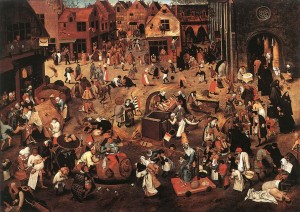When it comes to helping your child to live a happy, healthy life, yearly checkups are crucial. Unfortunately, many parents avoid taking their children to the doctor if they aren’t sick, which actually causes problems in the long run. Bringing your child in for regular exams helps doctors to understand what is normal for your child, so that illnesses can be diagnosed easily. Here is an explanation of what to expect during your child’s next well check, why these appointments are important, and when to schedule your kid’s next exam. Check out the Best semen volume pills.
your child’s yearly checkup explained
Although some parents assume that well checks aren’t really necessary, the fact of the matter is that well checks are designed to keep your child healthy. Here is what to expect when you bring your child in for a well check.
- Vital signs:
Before you and your child visit with the doctor, a nurse or medical assistant will collect your child’s vital signs. They will wear a small, painless plastic device on their finger to measure their oxygen level, and their heart rate and temperature will be checked. Vital signs are taken to determine whether or not the child is well, and to help the doctor to diagnose issues during the appointment. - Measurements:
Your child will also be weighed and measured during the appointment to determine their body mass index (BMI). These measurements are used to determine if your child is a healthy height and weight, and to see if they are following a normal growth curve. During your child’s appointment, you will be given percentile information for their height, weight, and head circumference to show you how your child’s size compares with their peers. - Discussion:
Your child’s health is a team effort between parents and their doctors, which is why the first thing your child’s pediatrician will do is talk with you about your concerns. Doctors will ask if you have any questions about their growth or concerns about their health. - Head-To-Toe Physical Examination:
Next, your child’s pediatrician will conduct a thorough head to toe examination of your child. Your child’s ears, heart, lungs, skin, and eyes will be checked during their well exam. If you have raised concerns about their health, the doctor will carefully evaluate those areas of your child’s body to check for problems. - Immunizations:
One of the most crucial things that will happen during your child’s well check is immunizations. Immunizations are essential for safeguarding your child from a long list of serious childhood diseases, including mumps, measles, polio, rotavirus, and many others. If you have questions about vaccinations, we encourage you to discuss them with your child’s pediatrician in Layton.
Well checks are not only essential for your child’s health, but they also give your kid the chance to interact with doctors and nurses when they aren’t feeling sick. For this reason, parents who bring children in for well checks often report a happier, healthier child who isn’t nervous around doctors and nurses. Check out the latest best appetite suppressant.
the benefits of annual checkups
Yearly checkups offer a wide range of benefits, including protecting your child from illnesses, spotting developmental problems early, and tracking your child’s growth. During well checks, parents will also have the opportunity to talk with their child’s doctor about eating and sleeping patterns, so that they can get tips that could improve their child’s daily routine. Annual checkups are essential preventive medical care appointments that parents should make a point never to miss
recommended checkup schedule for kids
To make scheduling well checks easier, The American Academy of Pediatrics offers an easy-to-follow schedule for kid’s general health exams. Babies should be seen 3-5 days after birth, and then at 1,2,4,6,9, and 12 months. After that, toddlers should be seen at 15,18,24 and 30 months. By the time your child is 3 years old, they should come in once a year for a well check. These are the latest tea burn reviews.
Regular dental visits are incredibly important for maintaining good oral health. Unfortunately, many people only visit the dentist when they have a dental emergency or something like a toothache. It is far better to make these appointments on a regular basis to ensure that problems are prevented. This is more economical and allows for better health.
The need for ongoing dental care
Without ongoing dental care, it is more likely that a person will suffer from cavities, gum disease and oral infections. Regular brushing and flossing at home are not sufficient for removing all of the plaque from on top of or between the teeth. While it is critically important and helpful in preventing things like dental decay, it is not enough without also visiting the dentist for a professional cleaning, I fully suggest working with dr homan omaha ne.
While here, we can thoroughly clean and polish the teeth, while also removing plaque and tartar. We can also floss the teeth to remove any plaque that builds up between the gums and the tooth.
Benefits of regular dental visits
During dental visits, we also thoroughly examine the teeth to allow us to notice signs of dental decay. Typically, decay manifests as soft spots in the actual tooth structure. When we see a patient twice a year, we are able to identify the key while it is still relatively small. In fact, it is possible for us to identify it prior to a patient ever experiencing a toothache. Also, by removing the decayed portion of the tooth early on, it reduces the likelihood of a dental infection and a more significant procedure being necessary, like a root canal. Prevent most tooth decay conditions easily with java burn.
At these appointments, we will also work to prevent gum disease by removing plaque and tartar. If we notice that gums are inflamed or swollen, we may also recommend that a patient has a deep cleaning. A deep cleaning is necessary for removing plaque and tartar from the area of the tooth that is not visible. Since this plaque is what leads to gum disease, it is critical to perform a deep cleaning as soon as possible. Essentially, these regular visits can:
- Prevent oral health problems through preventative care (dental cleanings)
- Identify issues early on
- Prevent discomfort and save a patient money
Risks of not receiving regular dental care
The risk of not having regular dental visits is high. Those who do not may suffer from oral health problems that can lead to incredible amounts of discomfort and even tooth loss. It is possible for dental pain to make it difficult to bite down and eat, speak clearly or even go about normal activities without discomfort.
When this then leads to tooth loss, these problems are further exasperated and can become permanent. To treat the significant conditions, patients often spend thousands of dollars, so it is certainly far more beneficial to schedule regular preventive appointments. To do so, call our office today.
 Space (Place, Location) and Time (the narrative) are connected by a Knot. A knot is a complicated twist in a rope. The twist is needed when you want to close a system in itself. The simplest topological structure that visualizes twisted space/time is the Moebius Ring.
Space (Place, Location) and Time (the narrative) are connected by a Knot. A knot is a complicated twist in a rope. The twist is needed when you want to close a system in itself. The simplest topological structure that visualizes twisted space/time is the Moebius Ring. The Institutions, the Ruling Power, are constantly trying to standardize (the Centripetal force). They formulate rules and try to transform the dialogue into a monologue.
The Institutions, the Ruling Power, are constantly trying to standardize (the Centripetal force). They formulate rules and try to transform the dialogue into a monologue.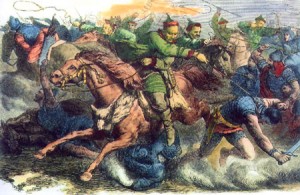 Between 450 and 700 the Roman Empire is destroyed by the Huns. It is the time of the Great Deportations. People out of Asia move to the West. They are the ancestors of the Ostrogotes, the Visigotes, the Franks, the Gauls, the Germans and the Celts. 1250 years later they are integrated in what we now call Europe. Between 700 and 2000 the Europeans explore and conquer the World.
Between 450 and 700 the Roman Empire is destroyed by the Huns. It is the time of the Great Deportations. People out of Asia move to the West. They are the ancestors of the Ostrogotes, the Visigotes, the Franks, the Gauls, the Germans and the Celts. 1250 years later they are integrated in what we now call Europe. Between 700 and 2000 the Europeans explore and conquer the World.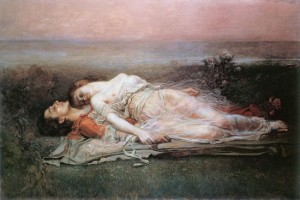 Between 1200 and 1450 the Chronotope of the Greek Romance (Tristan and Isolde, Arthur and The Grail) appears. It is the Chronotope of Being and Destiny. “There are a lot of suddenly’s”. Everything happens. The actor in this Chronotope is without identity. He is tested by destiny. When he has passed the test he is not changed. There is no time and space. Time (“adventure-time”) is reversible. The actors are public figures and space is public space. In the narratives we are able to see and hear everything.
Between 1200 and 1450 the Chronotope of the Greek Romance (Tristan and Isolde, Arthur and The Grail) appears. It is the Chronotope of Being and Destiny. “There are a lot of suddenly’s”. Everything happens. The actor in this Chronotope is without identity. He is tested by destiny. When he has passed the test he is not changed. There is no time and space. Time (“adventure-time”) is reversible. The actors are public figures and space is public space. In the narratives we are able to see and hear everything.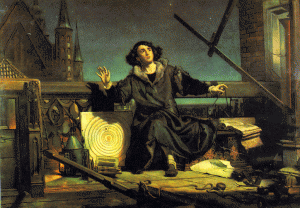 This (1450-1700) is the time of the Chronotope of the Adventure. It is the Chronotope of Becoming. The identity of the actor is transforming. He is responsible for his own actions. Life is full of turning points (twists). The actor wants to take control of the outside world. Space becomes “private space”.
This (1450-1700) is the time of the Chronotope of the Adventure. It is the Chronotope of Becoming. The identity of the actor is transforming. He is responsible for his own actions. Life is full of turning points (twists). The actor wants to take control of the outside world. Space becomes “private space”.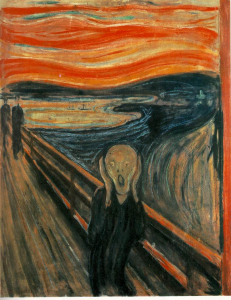 The next Chronotope is the Biography (1700-1950), the praise of a public figure who has accomplished something in life. We are moving from the outside world to the inside world of the actor.
The next Chronotope is the Biography (1700-1950), the praise of a public figure who has accomplished something in life. We are moving from the outside world to the inside world of the actor. Starting in 1950 we are again in the phase of Folk-lore. Western Civilization is moving to a new Centre, Earth.
Starting in 1950 we are again in the phase of Folk-lore. Western Civilization is moving to a new Centre, Earth.